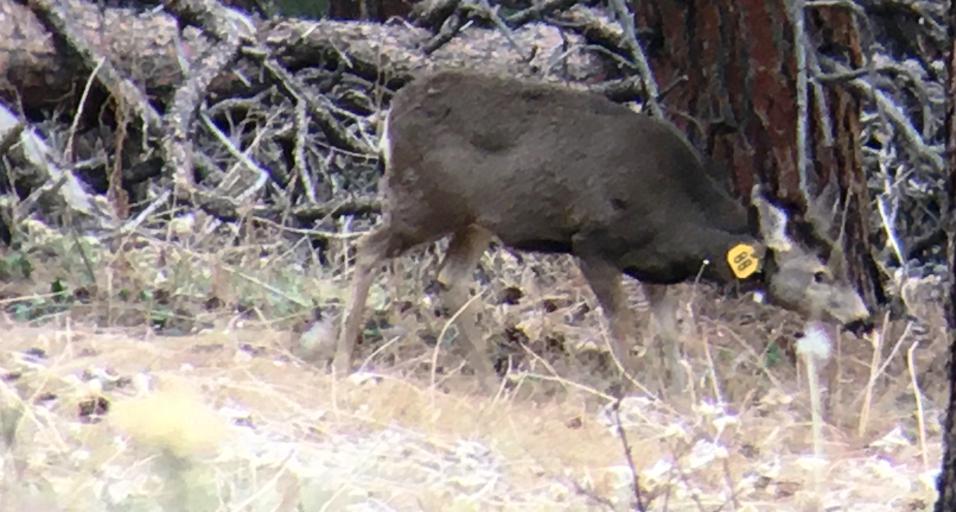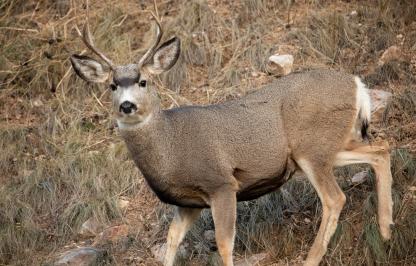With support from a Bureau of Land Management Wildlife Resource Management grant, the North Bighorns Mule Deer Study will expand in early 2022.
The study began in March 2020 with the goals of identifying mule deer movements in the northern Bighorn Mountains, evaluating seasonal range and habitat use, identifying habitat improvement and conservation opportunities, and documenting vital rates.
Collars were deployed on 130 mule deer does during four capture events on the west and east side of the Bighorns. Three captures took place on winter ranges in March 2020, December 2020 and February 2021 and one on summer ranges in August 2020.
The collars are recording and storing the GPS locations of each deer every two hours. This fine-scale movement data will be accessible to wildlife managers at the end of the study when the onboard computer from each collar is downloaded. However during the study, biologists are receiving one or two location updates per deer per day, which allows regular monitoring of movements throughout the year.
Twenty-three collars from does who have died during the study will be redeployed in December 2021 and 35 new collars will be deployed in March 2022 with funding from the BLM wildlife grant.
“In December, we will focus on placing collars on does to fill in the areas we think we are missing movement data,” said Carrie Kyle, a University of Wyoming graduate student who is leading the study. “In March we will try and capture fawns of our collared does, with the goal of documenting 35 doe/fawn pairs. With these new captures, we aim to document how the mother's strategy and the year-to-year conditions fawns experience affect their migratory decisions throughout their lifetime. Since these collars will be deployed for three years, they should record up to three spring migrations per fawn. We will collect the bulk of the data when the collars deployed in 2020 begin to drop off the animals in March 2023.”
There have been some interesting movements documented already. The majority of deer collared in August 2020 on mountain summer ranges moved to the west side of the Bighorns during winter. Wildlife managers expected a more equitable distribution of deer moving to lower elevation winter ranges on the east and west side. There is also a larger than expected segment of this herd that spends the entire year along the foothills of the Bighorns at lower elevations.
In addition to recent Bureau of Land Management funding, the project has received generous financial and logistical support from the Knobloch Family Foundation, The Nature Conservancy, the Mule Deer Foundation, Sheridan Community Land Trust, the Wyoming Game and Fish Department, the Wyoming Wildlife and Natural Resource Trust, the Department of the Interior Secretarial Order 3362 (through WGFD), the Cody Chapter of Muley Fanatics, Bowhunters of Wyoming, the Bighorn National Forest, the University of Wyoming Research and Extension Center and the Wyoming Governor’s Big Game License Coalition.




